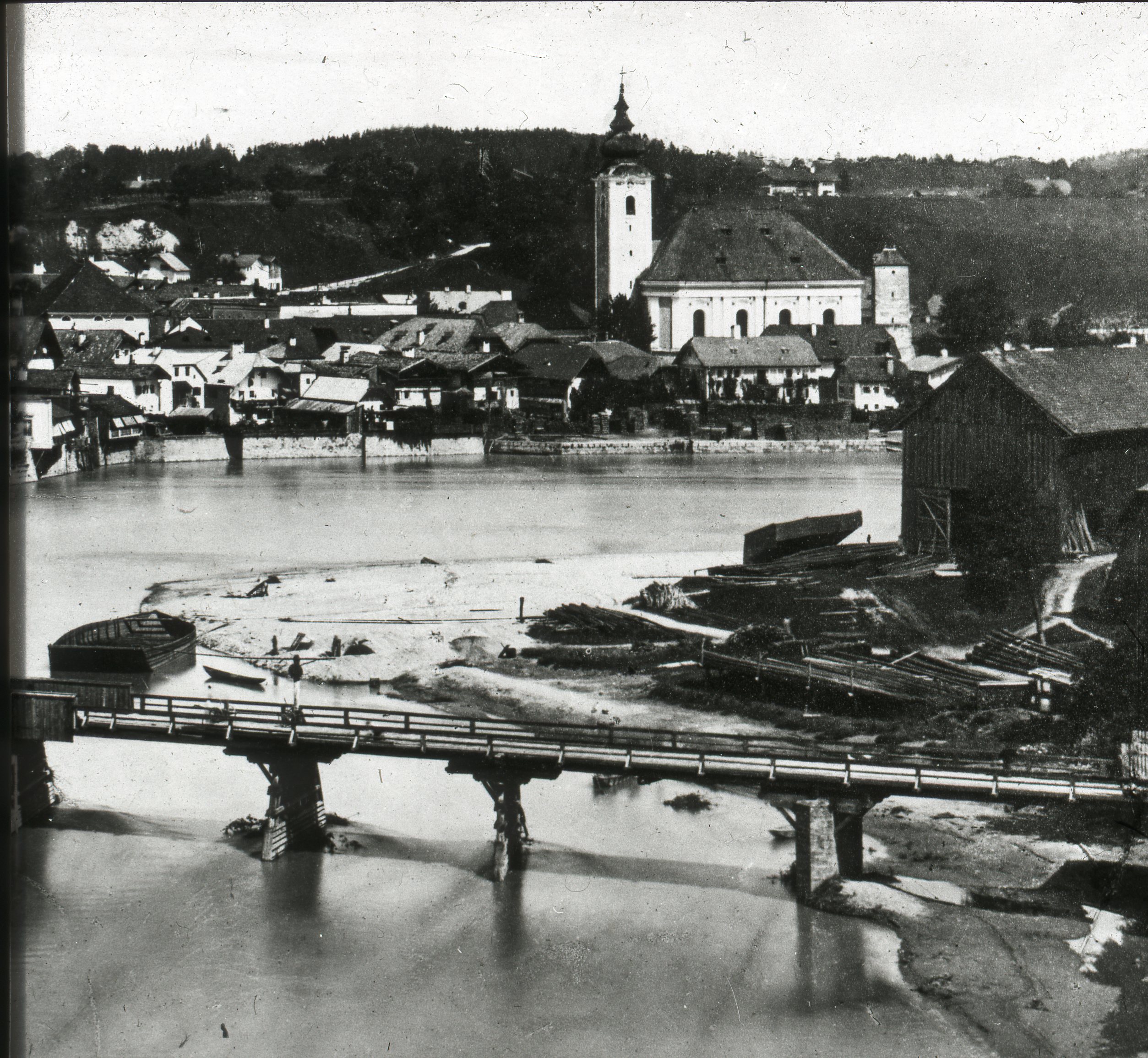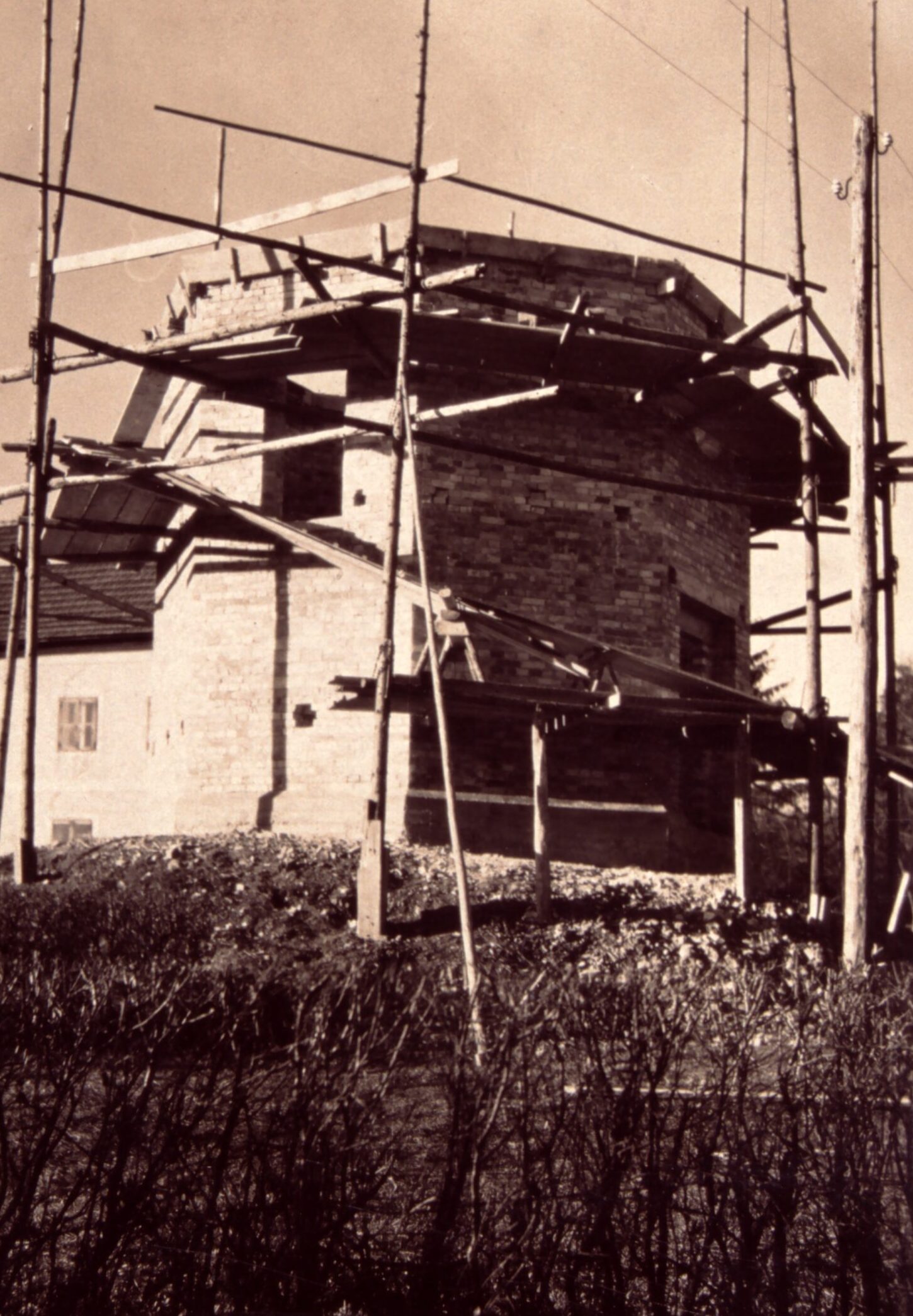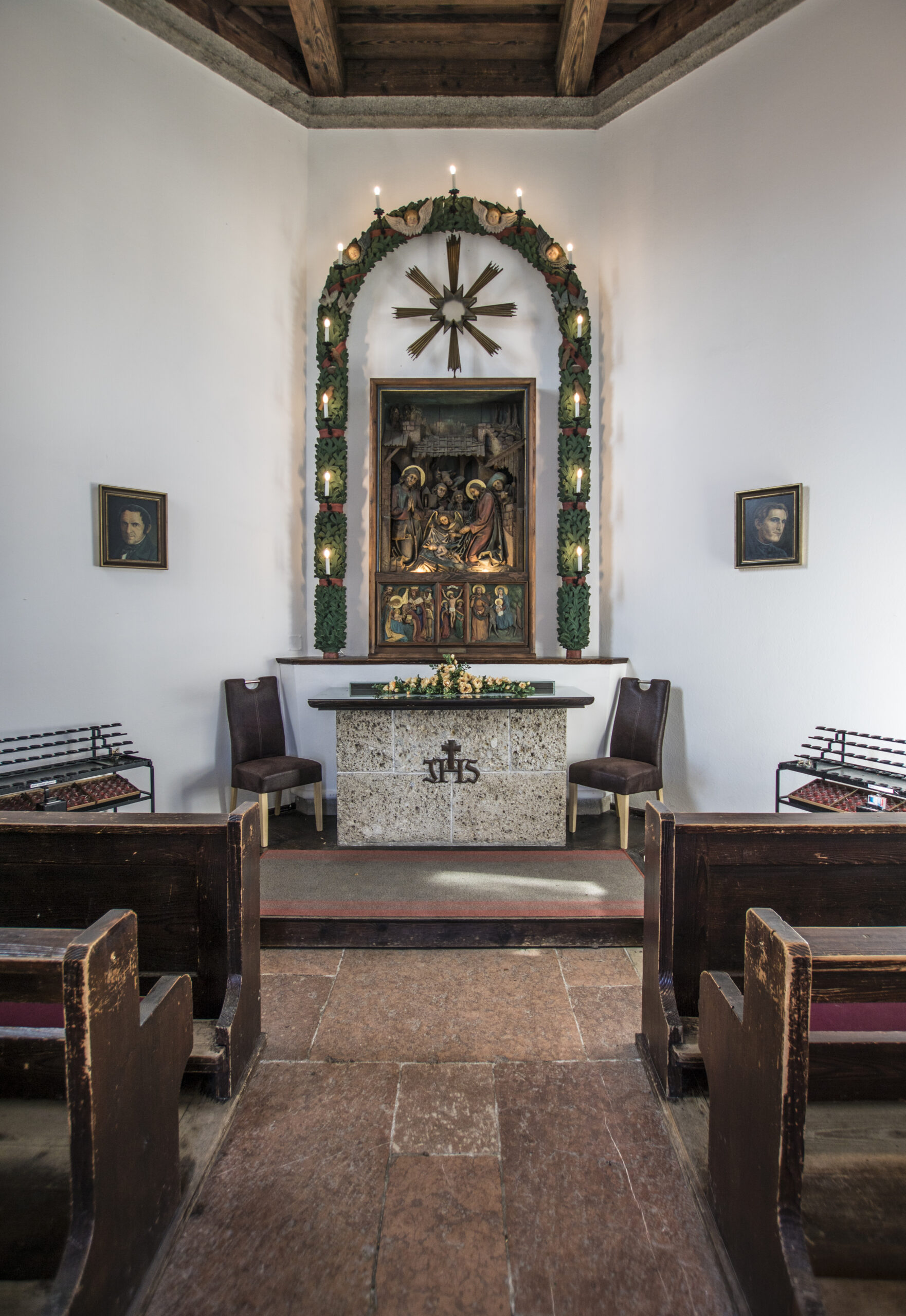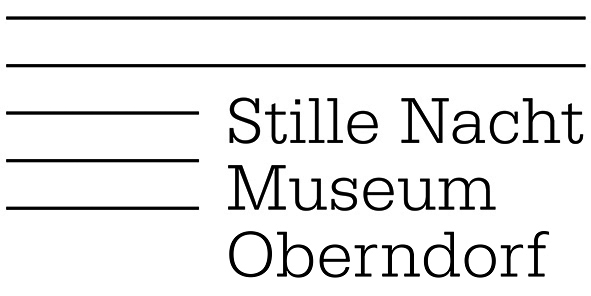
The song “Silent Night! Holy Night!” was first performed in the magnificent late baroque church of St. Nikola. The devastating floods of 1897 and 1899 left their mark on the church, which then had to be closed due to structural damage. The frequent flooding led to the decision to relocate the entire town to a higher point upstream and also build a new parish church there. This was completed in 1910, but was already consecrated to St. Nicholas in 1906. Finally, the demolition of the old St. Nikola church began.
In memory of the place where “Silent Night! Holy Night!” was first performed, it was decided to establish a memorial site and ultimately chose to build a small memorial chapel – today’s Silent Night Chapel.
The intentionally simple chapel was built on the rubble of the old St. Nikola Church. It took the citizens of Oberndorf 13 years during the difficult times between the two World Wars to build a worthy memorial site for the song. It was financed solely through donations and the sale of memorial plaques and postcards featuring motifs of the former church.
It was finally inaugurated on August 15, 1937. However, it was never consecrated by the church.


The central focus of the chapel is the wooden relief altarpiece by Hermann Hutter from 1915. It depicts a nativity scene: Mary, Joseph, and baby Jesus being protected by an angel, surrounded by praying shepherds and their animals. The Hallein woodcarver Max Domenig created the two reliefs on the left and right. These show the adoration of baby Jesus by the three wise men and the flight of the Jews from Egypt. He also created the round arch light wreath and the large star. The middle predella relief below the main motif, depicting the crucifixion of Jesus Christ, was carved by Franz Budig. Two colorful stained glass windows are found on two of the eight sides. They depict the two song creators Mohr and Gruber and their places of work. Teacher Franz Xaver Gruber with the Arnsdorf school and the Maria im Mösl church, assistant priest Joseph Mohr with the sexton’s house and St. Nikola Church. Here, Franz Xaver Gruber holds the guitar instead of Joseph Mohr, who actually mastered this instrument. For many years, people believed that Gruber played the guitar on December 24, 1818. A misconception, as we know today.

